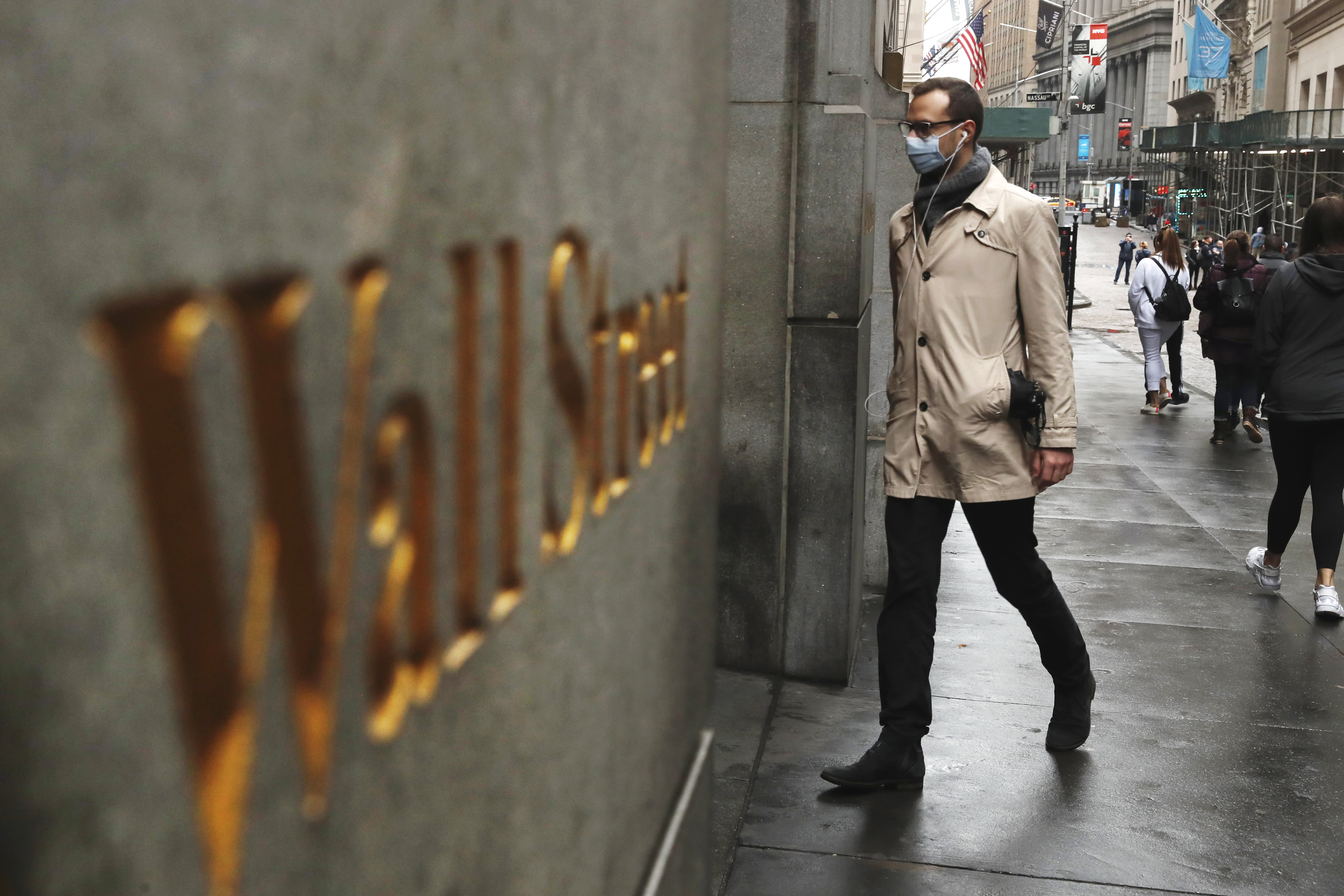A man wears a protective mask as he walks on Wall Street during the coronavirus outbreak in New York City, New York, U.S., March 13, 2020.
Lucas Jackson | Reuters
A $2.25 billion United Airlines debt offering failed last week, but that does not signal trouble for others in the corporate debt market where the Fed’s promise of liquidity has corporate America issuing new debt at a record pace for a seventh week.
Market pros say United, in an industry severely impacted by the coronavirus, was most likely unable or unwilling to meet buyers on price and terms after three days of trying. The deal, pulled Friday, was tied to 360 older jets, or about 40% of the United fleet.
Since the Fed announced it would buy corporate bonds, the market has been trading far better and there have been weeks of record issuance. There has been about $575 billion in investment grade debt issued, after the Fed first said it would buy corporate bonds on March 23, according to Credit Flow Research. The Fed plans to purchase investment grade and high yield debt, including ETFs.
Companies are taking advantage of low yields to refinance older, higher yielding debt, pay down bank loans and build cash hoards to get them through the recession and a period of uncertainty. They are also looking to issue debt to reduce their involvement in the short-term commercial paper market, which was frozen before the Fed announced a separate program for that market.
“First of all, they’re building a war chest because you’re going to have much lower revenues for a period of time,” said Hans Mikkelsen, head of investment grade credit at Bank of America. “Companies drew credit lines, they took about $150 billion of credit, and if you look at March and April issuance that exceeds refinancings, then between the credit lines and issuance, they probably took $500 billion. They need a lot of money because it’s uncertain how long it’s going to be weak.”
The frenzy of corporate debt offerings continued Monday, with about $25.7 billion hitting the market, including Disney’s $11 billion offering and PayPay’s $4 billion. Companies issued $108 billion in investment grade and high yield deals last week, and the $98 billion in investment grade would have been the third busiest week ever for that category, bested only by two weeks in April, according to Credit Flow Research.
Now investors are waiting to see the Fed put its plan into action, since it was expected to start some of its $250 billion in corporate debt purchases in early May. The Fed has also provided a lending backstop, promising to help investment grade companies issue debt if they become otherwise unable. But there has been no new word or direction from the Federal Reserve.
“The Fed acting very swiftly and very forcefully, I think was key to stabilizing markets,” said Jon Duensing, managing director, investment grade corporates at Amundi Pioneer. Duensing said investors are now watching to see what the Fed says about its plans for the corporate bond market. “There would be a level of disappointment if the Fed did not get involved in the market….First off, I think the Fed needs to signal they want to be involved…I think that’s going to generate more validation than anything else.”
Duensing said the corporate bond market has been pricing in the Fed’s action already, even though it has not clarified its timing on the purchases. The remaining days of “early May” are slipping away, and it soon will be mid-May.
The Fed effect
Strategists say the Fed has impacted the market in a big way, and it is expected to follow through with its purchases after it sorts out the process. Spreads across all investment ratings, meaning their yield to Treasurys, has narrowed, and issuance was at a record clip in March and April and likely to be again in May.
It is relatively cheap for investment grade companies to issue. The early talk was that A-minus rated Disney’s 5-year note would yield 175 basis points above Treasurys.
Strategists say that for now this record flood of bonds is finding willing buyers in the U.S. and from overseas because the alternative is trillions in negative yielding European and Japanese sovereign and corporate debt.
“I think valuations in investment grade debt are compelling here, especially since for the first time ever you have a provider of liquidity to the markets and to individual companies. That’s the biggest buyer in the world,” said Mikkelsen.
But the one deal that did not take off was the 3-year and 5-year non-callable high yield bonds from United, backed by 360 aircraft, or about 40% of its fleet. Market pros say the deal, designed to repay bank loans, was probably grounded because investors may have wanted more interest than United was willing to pay.
Analysts note other airlines were able to issue, including Southwest and Delta. For instance, Delta came to market in April. It issued $3.5 billion in 5-year bonds, which was secured by first liens on domestic slots at airports and it yielded 7%, according to Credit Flow Research.
Duensing said investors are looking for bonds that are not, at least immediately callable as compensation for investing in this risky period. Should lower rates become available, companies could refinance debt with lower yielding bonds.
